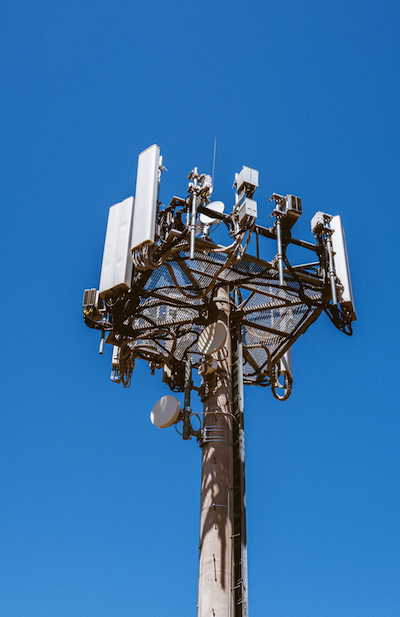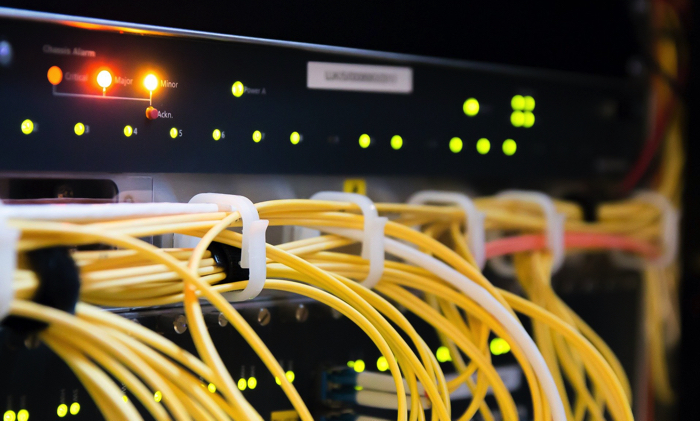What is 5G?
5G refers to a new cellular network standard that is meant to offer very high multi-Gbps peak data speeds, vast network capacity, improved network reliability, ultra-low latency, and enhanced user experience. It is the fifth-generation cellular network after 1G, 2G, 3G, and 4G. 5G allows people, machines, devices, and objects to connect virtually. It’s designed to serve growing connectivity and data in today’s society. 5G is also designed to serve the increasing number of connected devices and innovations of the future.
What are the differences between 5G and the previous cellular network generations?
The cellular network generations that existed before 5G were 1G, 2G, 3G, and 4G.
1G was the first cellular network generation that was introduced in the early 1980s. The standard delivered analog voice. 1G was had various drawbacks, which included inadequate coverage, low sound quality, and had no support for roaming between different operators. In 1G, there was no call encryption. Therefore, communications could be easily intercepted.
2G is the second generation cellular network standard. It was introduced in 1992 and supported the encryption of communications. It was the first standard to offer SMS text messaging and data services, although 2G speed was low compared to the rates of its successors.
3G is the third generation cellular network standard. It was commercially introduced to the market for the first time in 2003. The network offers faster speeds, internet connectivity, and improved quality compared to its predecessors. Also, the network provides higher levels of reliability and security as well.
4G is the fourth generation cellular network standard. The standard has high connection speeds, low cost per bit, and support for interactive video, audio, and multimedia. Also, 4G supports seamless switching, service portability, and highly scalable mobile networks.
5G is designed with extended capacity, high speeds, negligible latency, and improved user experiences. The standard is designed to meet the needs of the increasing number of devices connected to the internet. It is also designed to cater for the innovations of the future.
How and when 5G will affect the world economy?
5G technology is expected to drive global growth. Its impact on the economy will be higher than that of its predecessors. The full potential of 5G on the economy will likely be felt across the world in 2035. It is expected that 5G will support many industries and enable goods and services worth about $13.2 trillion. With 5G, over 22 million jobs will be created across the globe. It is estimated that the GDP will experience a 2.1 trillion dollars growth. Apart from traditional mobile networking, 5G is expected to find applications in other industries such as the automotive industry.
Where is the 5G technology being used?
One of the essential features of the 5G technology is that it is designed to support future innovations that are unknown to us today. The 5G technology is being used in various categories of connected services, including massive Internet of Things (IoT), improved mobile broadband, and mission-critical communications.
Improved Mobile broadband
5G network is being used to provide enhanced mobile broadband in emerging technologies such as virtual reality and augmented reality. The 5G standard is suitable for such technologies because of its uniform data rates, lower cost per bit, and low latency.
Mission-critical communication systems
5G enables new services that can be used to transform industries with available, ultra-reliable, and low-latency links. Such sectors include the medical industry, remote control of critical systems, and in the automotive industry.
Internet of Things (IoT)
The 5G technology is meant to connect a large number of sensors in virtually everything via the technology’s ability to scale down in power, mobility, and data rates. This provides low-cost and extremely lean connectivity solutions.
How fast is the 5G technology?
The 5G technology is designed to operate at speeds of up to 20Gbps. The rates vary based on IMT-2020 requirements. However, the 5G technology is faster than it is believed to be. It is designed to offer extra network capacity by expanding into a new spectrum. Also, the 5G technology delivers low latency. It can serve consumer consistent user experience such that data rates can consistently stay high. The 5G technology is supported by the Gigabit LTE coverage foundation that can provide Gigabit-class connectivity.
Is the 5G technology available now?
5G technology is already in use. Launching the network started in early 2019. Many countries are adopting 5G technology. More countries are expected to adopt the technology with time. So far, over 30 countries have 5G technology-enabled. Some of the countries include the United States, the United Kingdom, Australia, German, South Africa, Oman, and many more. We also have android phone manufacturers commercializing 5G enabled mobile phones. A large number of consumer will soon be able to access the 5G technology via their 5G-enabled mobile devices. The excitement behind faster adoption of the 5G technology compared to its predecessors is attributed to its high speeds and low latencies.
Do you need a new smartphone for me to use the 5G network?
Everyone that will need to use the 5G technology will need to get a new mobile phone that supports the technology. There are smartphones already in the market that support the 5G technology. Also, there are carriers across the globe that provide support for 5G technology. As 5G rollout in different countries continues, more 5G-enabled smartphones will be released to the market. More carriers will also become available for subscription as 5G deployment continues.
How does the 5G network work?
Like the 4G LTE network, the 5G network is based on the orthogonal frequency-division multiplexing (OFDM) principle. Although the 5G operates on the same principle as the 4G LTE, the 5G New Radio air interface enhances the orthogonal frequency-division multiplexing to deliver a higher scalability and flexibility level. 5G provides higher flexibility and scalability levels and expands into new service areas such as the Internet of Things (IoT) and mission-critical communications.
Who invented the 5G network?
Several companies have been contributing to the development of the 5G network. Some of the companies include Huawei, QUALCOMM, Nokia, Samsung Electronics, Lenovo, and Intel Corporation. Other companies include Cisco Systems, MediaTek, China Mobile, Orange, and Vodafone. The network is not owned by an individual or a company. The milestones being achieved on 5G network development largely depend on the efforts of the contributing companies.
Technologies that makeup the 5G network

The 5G technology is based on the orthogonal frequency-division multiplexing (OFDM) principle. The OFDM modulates signals across various channels to reduce any form of interference. Alongside the OFDM, the 5G network uses the New Radio interference that enhances the OFDM to deliver high flexibility and scalability. This provides more 5G network access to as many people as possible. Also, the 5G network uses wider bandwidth technologies such as mmWave and the sub-6 GHz.
5G technology expands the use of spectrum resources. This leads to higher network bandwidths of over 100GHz compared to a bandwidth of 3 GHz in 4G networks. The 5G network can work in lower bands such as the sub-6 GHz and mmWave, which brings higher capacity levels, speed, low latency, and throughput.
How 5G is better than 4G
The 5G network is better than its predecessor, the 4G network in various ways. These ways are:-
- 5G network provides high-speed levels compared to the 4G. The 5G operates at a peak speed of up to 20Gbps and average speeds of over one hundred (100+) Mbps.
- The 5G network has more capacity compared to 4G. It has 100 times of traffic capacity and efficiency compared to the 4G network.
- The 5G network has low latency compared to 4G. Its latency is 10times less that of 4G.
- 5G has a more capable unified platform compared to 4G. The 5G network is designed to be a more unified platform that provides higher speeds and new services mission-critical communications and the Internet of Things (IoT). The 5G network can also support different types of the spectrum, including shared, licensed, and unlicensed spectrums.
- 5G has a better spectrum than the 4G network. The network is designed to make use of every spectrum bit across various available spectrum bands and paradigms, including low, mid, and high bands.
How the 5G network will affect users
The 5G network will transform the lives of users in different ways. First, it will provide users with faster download speeds, low latency, and higher capacity and connects billions of devices across the globe. The network will be essential in artificial intelligence, Internet of Things (IoT), and Virtual Reality. For example, with the help of 5G networks, users will be able to use augmented and virtual realities in shopping, near-instant access to cloud services, and real-time translation of videos.
How does 5G change home internet service?
With 5G networks, home networks will be able to use wireless modems instead of existing wires. It will be possible for Internet Service Providers to serve customers with 5G network infrastructure – leading to higher performance, flexibility in deployment, and higher coverage.

